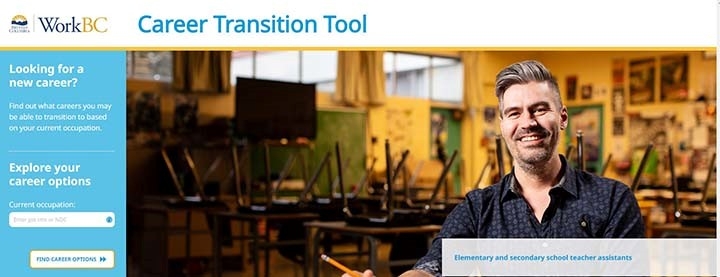Searching for a job
If your youth decides to enter the workforce right after high school, encourage them to visit the WorkBC.ca Job Board.
The job board offers the ability to:
- Search for jobs by location, salary range, industry, occupation and job type
- Browse employer profiles and postings
- Apply directly to employers for jobs
Create a job seeker account to:
- Receive job alerts when new jobs are posted
- Save and manage their favourite jobs and searches
- “Follow” any potential employers and be notified when they post a job
Finding a job takes work. Check out additional resources and supports.
Remember to network! network! network!
Statistics show that 80% of job vacancies are not advertised. In some regions, that percentage is higher. Networking is a vital way to identify work opportunities and connect with potential employers in the “hidden” job market.
Check out these tips on effective networking.
Creating a resume and cover letter
Set your youth up for success by improving their job application and increasing their chances of becoming the successful candidate.
Discover how to write a strong resume and create an effective cover letter with these job application tips.
Check out this video that offers a step-by-step process, along with additional tips to help you create your resume and cover letter.
Preparing for an interview
The key to any successful interview is preparing ahead of time. Check out the following interview tips.
To avoid unnecessary stress prior to a virtual interview, be sure to watch this video for some helpful tips in how to navigate a virtual interview, as well as some solutions to the most common mishaps happening in the virtual world.
Landing a gig
The gig economy is often characterized as a labour market that has an abundance of short-term contracts, part-time, casual or freelance work. It can offer the opportunity for young workers to gain experience, “trying on” a career, build a network or develop a history of work.
Jobs such as these offer flexibility, which allows for work-life balance – a value which is becoming more significant for the younger generation. It offers youth the ability to be able to prioritize things that are important to them, such as time with friends and family, opportunity for travel, leisure time for hobbies, sports and interests, and a variety of experiences.
It is far less common lately for someone to adhere to the adage of finding a job and staying in it for life. Nowadays, youth entering the workforce will experience five to eight major career changes over their career, with an average of 15 employment transitions in their working lifetime.
Encourage your youth to check out potential employer websites (i.e. “about us” page and "job opportunities"). By "following" these employers on their social media channels, youth can find opportunities, as well as determine alignment with their values and goals.
Transitioning to another career
Is your youth already in the workforce and looking for other jobs they could easily transition into? The Career Transition Tool identifies alternative occupations that require similar skills, education and experience.

Considering self-employment
Self-employment is an option too, including:
- Run a business, with a partner or with employees
- Own and manage a franchise
- Work on contract for different clients
- Work as a consultant in your area of expertise
To succeed in self-employment, skills and an entrepreneurial aptitude are required.
Intrigued? Want to learn more? Next step: Planning. Start the business planning process.
Young entrepreneurs: review these additional resources.









